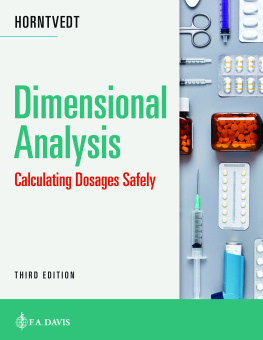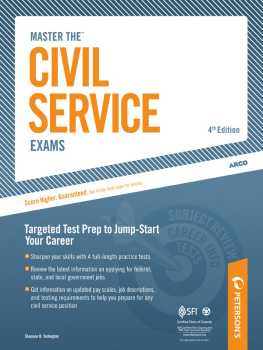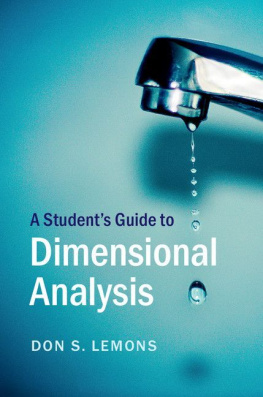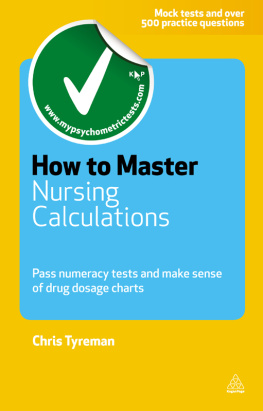Contents
Guide
Pages
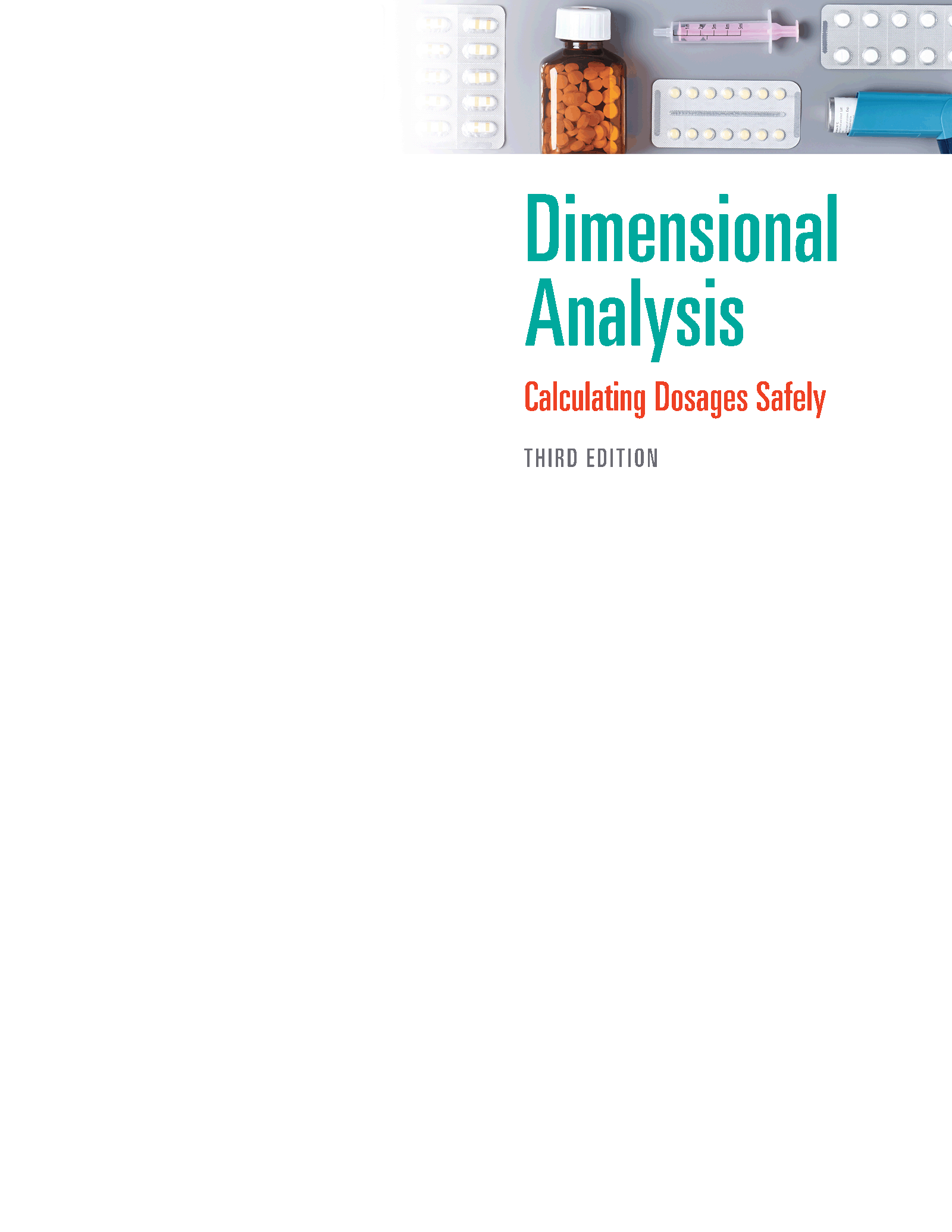

F. A. Davis Company
1915 Arch Street
Philadelphia, PA 19103
www.fadavis.com
Copyright 2023 by F. A. Davis Company
Copyright 2023, 2019, 2015, 2013 by F. A. Davis Company. All rights reserved. This book is protected by copyright. No part of it may be reproduced, stored in a retrieval system, or transmitted in any form or by any means, electronic, mechanical, photocopying, recording, or otherwise, without written permission from the publisher.
Printed in the United States of America
Last digit indicates print number: 10 9 8 7 6 5 4 3 2 1
Senior Acquisitions Editor: Jacalyn Sharp
Senior Content Project Manager: Elizabeth Hart
Design and Illustrations Manager: Carolyn OBrien
As new scientific information becomes available through basic and clinical research, recommended treatments and drug therapies undergo changes. The author(s) and publisher have done everything possible to make this book accurate, up to date, and in accord with accepted standards at the time of publication. The author(s), editors, and publisher are not responsible for errors or omissions or for consequences from application of the book, and make no warranty, expressed or implied, in regard to the contents of the book. Any practice described in this book should be applied by the reader in accordance with professional standards of care used in regard to the unique circumstances that may apply in each situation. The reader is advised always to check product information (package inserts) for changes and new information regarding dose and contraindications before administering any drug. Caution is especially urged when using new or infrequently ordered drugs.
Library of Congress Control Number: 2022949008
Authorization to photocopy items for internal or personal use, or the internal or personal use of specific clients, is granted by F. A. Davis Company for users registered with the Copyright Clearance Center (CCC) Transactional Reporting Service, provided that the fee of $.25 per copy is paid directly to CCC, 222 Rosewood Drive, Danvers, MA 01923. For those organizations that have been granted a photocopy license by CCC, a separate system of payment has been arranged. The fee code for users of the Transactional Reporting Service is: 978-1-7196-4628-4/22 0 + $.25.
Dedication
To healthcare professionals, first responders, and essential workers who have put their lives on the line to help others during the COVID-19 pandemic.
To my family and friends who provide unconditional love and support.
To learners in all healthcare professionsthank you for wanting to take care of your fellow human beings. Bless you!
Preface
Introduction
Dimensional Analysis: Calculating Dosages Safely provides a systematic approach to solving both simple and complex dosage problems. The dimensional analysis method organizes data methodically and allows learners to examine developing calculations for errors. It is an ideal method to build confidence, speed, and competency in dosage calculations. The third edition of this book serves to correct errors in the previous edition; eliminate bias in examples and case studies; decrease specific references to nursing (where appropriate), since dosage calculations are used by other healthcare professions; to differentiate between paper and electronic documentation; and update regulatory and other safety information.
This text emphasizes safe medication practices. Although accuracy in calculating dosages is extremely important, healthcare professionals who administer medications need to be able to read drug labels, interpret medication orders, and apply principles of safe drug administration to their practice.
Organization
Dimensional Analysis: Calculating Dosages Safely is organized in a simple-to-complex manner, where each chapter is designed to build on concepts learned in earlier chapters. The text is divided into four units:
Unit 1: Arithmetic Review and Dimensional Analysis includes basic arithmetic concepts such as working with whole numbers, fractions, decimals, percents, and introduces the principles of dimensional analysis.
Unit 2: Medication Administration covers concepts of medication administration such as systems of measurements, converting between systems of measurement, safety considerations, medication orders, reading labels and dosing devices, calculating dosages based on body weight and body surface area, intravenous delivery systems, and calculating intravenous flow rates.
Unit 3: Special Topics addresses enteral tube feedings, insulin and heparin administration, critical care dosage calculations, and lifespan considerations in dosage calculations.
Unit 4: Answers to Chapter Post-Test contains the answers to each chapters post-test. The three appendices at the end of the book provide extra assistance on using a calculator, interpreting Roman numerals, and converting the civilian clock to military time.
Features
Dimensional Analysis: Calculating Dosages Safely offers the following features:
Arithmetic Skills Assessment: This pre-test is designed to highlight strengths and weaknesses, allowing learners to focus on areas of remediation before starting study on dosage calculations.
Arithmetic Review: Chapters 1, 2, and 3 are for learners who want or need to review basic arithmetic skills.
Glossaries: Each chapter contains a glossary of terms used in math or medication administration.
Learning Objectives: Expected learning outcomes are specified.
Icons: Note and Alert icons are designed to bring attention to important points:
The Note icon directs attention to information that may highlight a concept or contain a shortcut hint.
The Alert icon directs attention to information that is vital for safe medication practice, including avoiding errors in dosage calculation.
Examples: Each topic includes adequate examples that guides learners through problems in a step-by-step manner.
Labels: Real and simulated drug labels help learners become comfortable with gathering the information needed to reconstitute powdered medications or calculate dosages accurately.
Practice: Each chapter is interspersed with short practice quizzes that assess learner skill level.
Case Studies: Selected chapters feature case studies that reflect actual clinical practice experiences in calculating dosages, using clinical protocols, and administering medications.
Key Points: Each chapter contains a list of the most important points contained within the chapter.
Chapter Post-Tests: Chapter post-tests assess skills learned in that chapter.
Unit Post-Tests: Unit post-tests assess skills learned in the entire unit.
Comprehensive Post-Test: The comprehensive post-test assesses skills learned throughout the entire book.
Online Resources at FADavis.com
Student Resources
Basic Math Interactive Exercise provides review of fractions, decimals, and roman numerals.
Speed Challenge Chapter Quizzes and Answers challenge learners ability to calculate dosages quickly and accurately.
Syringe Pull Exercises test the accuracy of drawing up medications in a syringe.

